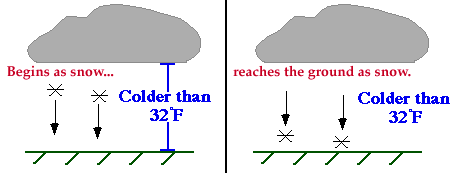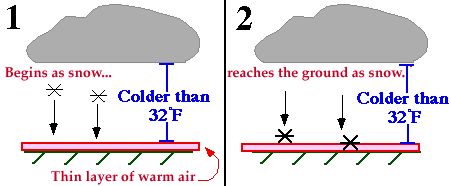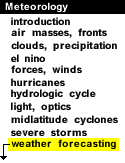
|
Most precipitation that reaches the ground actually begins as snow high in the atmosphere. These snow flakes develop somewhere above the freezing level where the air temperature is less than 32 F (the dashed blue line), and begin to fall toward the earth as snow. If ground temperature is above 32 F, the freezing level must be located somewhere above the ground. The falling snow passes through the freezing level into the warmer air, where it melts and changes to rain before reaching the ground.

When the air temperature at the ground is less than 32 F, the
precipitation begins falling as snow from the clouds.

Since it is falling into cold air, the snow does not melt on the way down
and reaches the ground as snow.
This is why cold air is important for there to be snow.

Once in a while, a very thin layer of
warm air is found near the surface and temperatures may be several
degrees above freezing. However, since the layer of warm air is so shallow,
the snow reaches the ground in tact before it has a chance to melt and
become rain. This is how snow falls when the surface temperatures are above
freezing.
Forecast Tip:
When forecasting precipitation type, if temperatures are expected
to be above freezing, then rain is most likely.
If temperatures are expected to be
below freezing, then forecast for snow.

moisture |
|

Remote Sensing |




